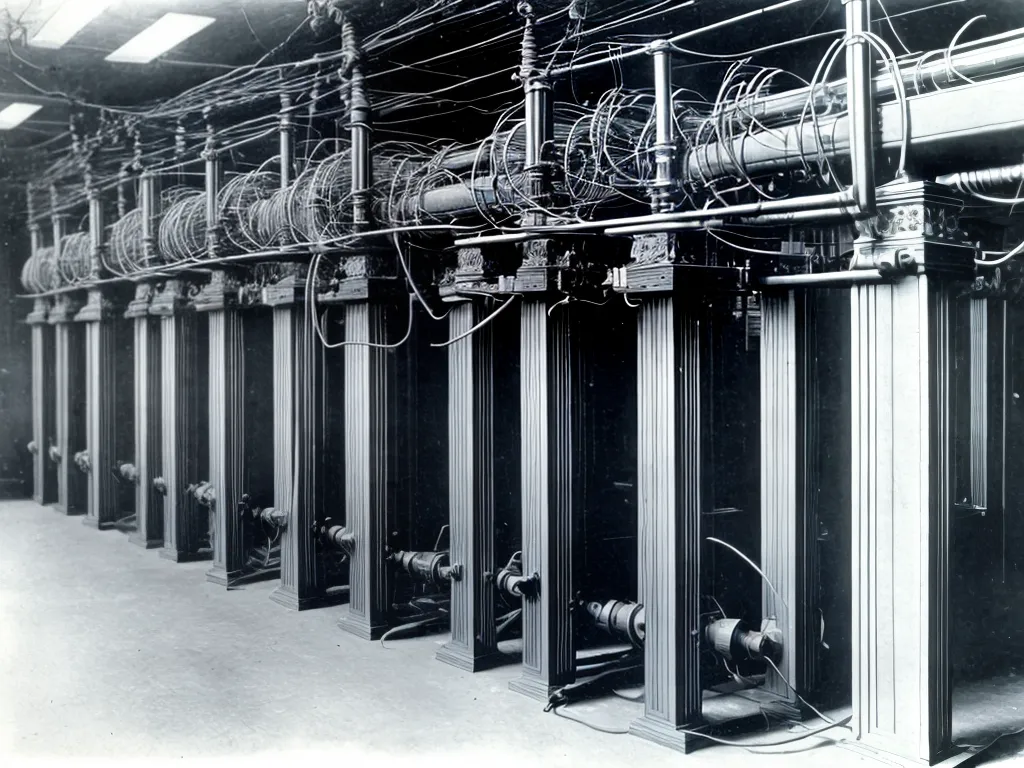
How the Open Wire System Powered the Telegraph in the 19th Century
The telegraph was a revolutionary communication technology that allowed people to transmit messages over long distances almost instantaneously. The open wire telegraph system was crucial to enabling this rapid communication in the 19th century.
The Basics of the Telegraph System
The telegraph worked by sending electrical signals through wires. Operators would tap out messages in Morse code, causing fluctuations in the electric current. These signals would travel through the wires and be received almost immediately by an operator at the other end.
The first working telegraph was developed in the 1830s and 1840s by Samuel Morse and others. It initially used a single wire, with electrical current flowing through the ground to complete the circuit. However, it was soon found that using two wires, forming a closed loop or circuit, worked much better.
Telegraph lines were built along railroad tracks across the United States and along poles across sparsely populated areas. By 1861, the United States had a transcontinental telegraph line connecting the east and west coasts.
The Open Wire System
Early telegraph systems used a single wire mounted on poles. However, it was soon realized that this method was ineffective over long distances due to signal degradation.
- The solution was the development of the open wire system in the 1850s and 1860s. This used two separate wires mounted on poles parallel to each other.
- The two wires formed a complete circuit, allowing electrical current to flow in a loop rather than dissipating into the ground.
- The parallel wires were positioned anywhere from 2 to 20 feet apart, high enough to avoid contact with people and objects on the ground.
- Insulators made of glass or porcelain were used to prevent the wires from touching the wooden poles, which would cause signal loss.
The open wire system allowed telegraph signals to travel much farther without degradation, enabling coast-to-coast communication. It became the dominant form of telegraph infrastructure in America and many other countries during the 19th century.
Why Was the Open Wire System More Effective?
There were a few key reasons why the open wire system worked so much better for telegraphy than the single wire approach:
- Balanced signals: With two equal wires carrying current, electromagnetic interference was minimized. This reduced signal distortion.
- Lower resistance: Rather than dissipating into the ground, the electrical current flowed in a complete circuit between the wires. This meant lower resistance and stronger signals.
- Higher voltages: The parallel wires could carry higher voltage signals than single wires in contact with the ground. This improved range and prevented interference.
- Dedicated circuit: The looped wire system provided a dedicated closed circuit for each telegraph communication channel. This isolated the electrical signals.
By improving range, reducing interference, and providing dedicated circuits, the open wire approach allowed telegraph networks to dramatically expand in the 19th century. Nearly all major telegraph lines used the open wire system by the 1870s. It drove global communication for decades until being surpassed by more advanced technologies.
Challenges With the Open Wire Telegraph Networks
Despite its advantages, the open wire telegraph system also faced some key challenges:
- Fragile wires: The wires were made of iron or steel and were prone to breaking, especially in bad weather. Telegraph repair crews worked around the clock to fix breaks.
- Wire crosstalk: Closely spaced parallel wires could induce currents in each other, causing muddled signals known as crosstalk. Wires had to be spaced adequately apart.
- Poor insulation: Early insulators were not always effective, allowing lost signals through poles. Improved ceramic and glass insulators helped minimize this issue.
- Right-of-way: Telegraph companies had to negotiate land access to build pole lines across private property. Farmers and Native American tribes resisted lines crossing their lands.
- Costly expansion: While highly useful, the open wire system required enormous upfront investments to build and expand telegraph networks. Securing funding was a constant challenge.
Maintaining and expanding the 19th century open wire telegraph networks required substantial skill, effort, and resources. But the benefits were tremendous, supporting the information revolution of that era.
The Telegraph's Lasting Impact on Communication
The telegraph powered by the open wire system had an enormous impact:
- Provided near real-time communication across vast distances for the first time.
- Allowed coordination of railroad schedules and freight services.
- Accelerated the speed of business transactions, stock trading, and news reporting.
- Enabled instant military battlefield communications during the Civil War.
- Transformed people's sense of distance and time by shrinking the world.
- Laid the groundwork for the global telecommunications network that followed.
The open wire telegraph ushered in the information age, bringing humanity closer together through instant long-distance messaging. This legacy technology profoundly changed society, culture, and commerce, influencing the modern world we live in today. Though supplanted by the telephone, radio and internet, the telegraph stands as a pioneering achievement.